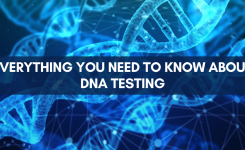Blog
“Know Your Status”: World AIDS Day 2018
Formed in 1988, World AIDS Day celebrated its 30th anniversary on December 1, 2018 as a pioneering global health campaign to raise awareness. The World Health Organization (WHO) joined global partners in commemorating World AIDS Day under the theme “Know Your Status”. The advocacy aimed to urge people to know their HIV status through testing and preventive measures. Policy-makers were also urged to promote a “health for all” agenda for HIV and related health services.
The Human Immunodeficiency Virus (HIV) targets the immune system and weakens people’s defense systems against infections and some types of cancer. Acquired Immunodeficiency Syndrome (AIDS) is the most advanced stage of HIV infection, which can take from 2 to 15 years to develop depending on the individual. Transmission can be obtained by having unsafe sex, unclean needles, and even through mother-child contact. A day-to-day interaction such as hugging and kissing could also be infectious but people who have HIV have it the strongest on the first few months. Some symptoms of people affected by AIDS range from having a fever, headache, rash, and sore-throat to swollen lymph nodes, weight loss, diarrhea and cough. Without proper treatment, it could potentially lead to severe illnesses like tuberculosis, cyptococcal meningitis and other bacterial infections that could worsen the health of an affected person.
And because it is still a major global public health issue, HIV affects people in different parts of the world, having claimed more than 35 million lives so far. The infection is often diagnosed through rapid diagnostic tests (RDT) and those at risk of acquiring this infection are sex workers and their clients, gay men, transgender people, people who inject drugs, and even those in prison. Based on the UNAIDS Data 2018, the number of people living with HIV globally and regionally totals to 36.9 million people as of 2017. On the other hand, a total of 1.8 million people are newly affected and the AIDS-related deaths totaled up to 940,000 people just last year. One in four people with HIV don’t know they have HIV and about a million people die every year from HIV due to unawareness or late treatment. In the sub-Saharan Africa, a girl aged between 15 to 24 years old gets HIV every minute of every day. Currently, only 75% of people know their HIV status and as of 2017, 21.7 million people that were affected received antiretroviral therapy globally.
Amidst the improving medical technology, there is still no cure for HIV infection. There is, however, lifelong antiretroviral therapy that is being used by those affected. One can only hope that someday, a cure for HIV/AIDS will emerge.
Source:
http://www.who.int/news-room/fact-sheets/detail/hiv-aids
Featured Photo:
Tim Marshall (Unsplash)








